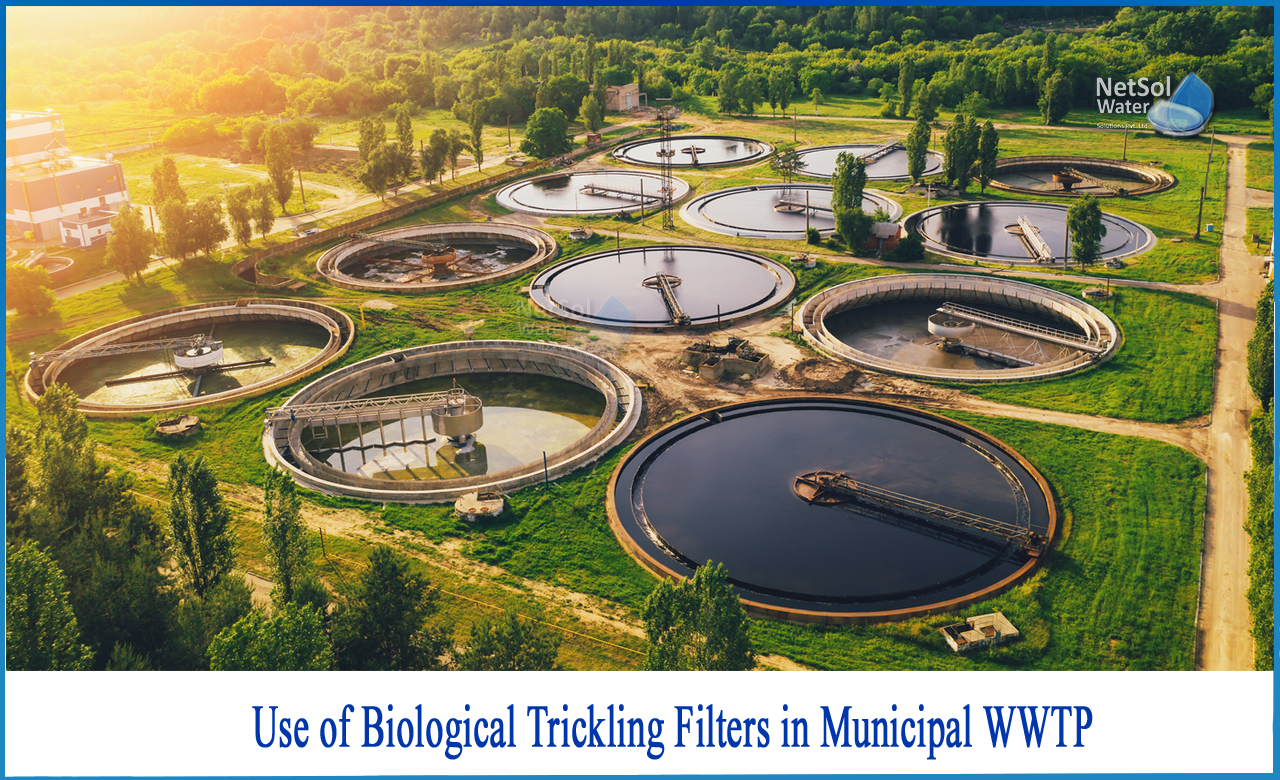What is the Use of Biological Trickling Filters in Municipal WWTP?
A trickling filter is asort of wastewater treatment system.It is made out of a fixed bed of pebbles, coke, gravel, slag, polyurethane foam, sphagnum peat moss, ceramic, or plastic media over which sewage or other wastewater runs downward, causing a layer of microbial slime (biofilm) to form and cover the medium. Splashing, diffusion, and either forced-air flowing through the bed or spontaneous convection of air if the filter material is porous, help to maintain aerobic conditions.
Treatment of sewage or other wastewater with trickling filters is one of the most well-known and well-established treatment methods!
What are the components of the biological trickling filters?
The following are the essential elements of a comprehensive trickling filter system:
1: A bed of filter medium that promotes and develops a layer of microbial slime;
2: An enclosure or container that houses the bed of filter medium;
3: A system for distributing the flow of wastewater over the filter medium; and
4: A system for collecting and disposing of any sludge from the treated effluent.
Benefits of biological trickling filters
A biological trickling filter's key advantages include its simple design, small footprint, effective organics removal, and energy economy.
1. Simple design:Biological trickling systems have a straightforward design that includes a container or tower filled with filtration medium such as crushed rock, gravel, or shredded plastic, as well as a distributor (usually a rotating arm with sprinklers) and an under-drain system. Because biological trickling systems are relatively basic mechanically, they can be repaired and maintained more easily and affordably than other wastewater treatment technologies.
2. Small footprint:Man-made ponds or lagoons are commonly used in traditional wastewater treatment plants, which can take up a lot of space. In comparison to other wastewater treatment systems, biological trickling filters are substantially more compact. This is due to the fact that a trickling filter system employs particulate filtration media with a large surface area. As a result, the media can hold a greater amount of biomass in a smaller space. As a result, biological trickling systems may be a good fit for metropolitan areas or other sites where bigger expanses of land are either too expensive or unavailable to build conventional wastewater treatment ponds.
3. Good organics removal:Biological trickling filters' main purpose is to lower the organic content of a wastewater stream, which is usually assessed as biological oxygen demand (BOD). These filters are great for reducing BOD levels quickly in streams with moderate to high organic content, and they can also remove some suspended particles. However, the system's ability to manage large amounts of organics is dependent on the filtration material utilized.
Low-, intermediate-, and high-rate filtration media are often used, and a system design should use media that is appropriate for the BOD loadings in the wastewater stream, the target effluent quality, and any primary and tertiary treatment technologies.A biological trickling filter, on the other hand, can produce effluent of sufficient quality for compliance discharge when correctly built. Tertiary treatment may be required for facilities with rigorous effluent regulations in order to remove pathogens or other impurities.
4. Energy efficiency:Biological trickling filters are an aerobic wastewater treatment method, which means that the biomass requires oxygen to flourish and break down organic elements. Aeration, agitation, and maintaining system pressure are all energy-intensive tasks for most aerobic systems, while trickling bio-filters just require energy to pump water to the distributor mechanism. As a result, biological trickling systems, such as activated sludge, moving bed bioreactors (MBBRs), and membrane bioreactors, often use less energy than other aerobic treatment technologies. These systems might be a fantastic choice for municipal facilities trying to reduce their energy consumption.
Do you still have some questions?
We are here to help! Based on our many years of experience manufacturing some of the most cost-effective water and wastewater treatment systems for families and companies, we'd love to assist you in finding a solution that meets your needs and budget. It is our obligation to conserve water and to ensure that wastewater is treated in order to prevent water pollution. Our wastewater treatment systems are offered with a variety of customized features to match your specific needs.
For further information or product related query, call us at +91 9650608473 or email at enquiry@netsolwater.com



